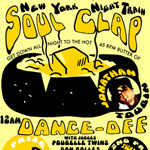NY Night Train Soul Clap & Dance-Off Top 500 First Installment (481-500): Track by Track
In a feeble attempt to organize my records, I’ve digitized thousands of original 45s since COVID. One of my many quantifying and grouping tasks was painstakingly carving a list of my 500 favorite records from the New York Night Train Soul Clap and Dance-Off party out of this raw material (mostly difficult for the hundreds of my favorite spins I couldn’t fit on here but deserve to be included!). With the exception of a couple of second-label presses from the same year, these are all from the original 45s – beautiful authentic artifacts bursting with character and sonic distinction! I’ve ripped the vinyl, mastered the tracks, photographed the labels, and done my best to research and write about the records and the artists in hopes that this is just the beginning of y(our) journey into the records and these very deserving artists. I’m releasing the list in twenty-five segments of twenty as both a Soundcloud podcast that functions as a podcast and DJ mix and a YouTube playlist (scroll down for everything!) as a supplemental guide. Also, since I haven’t been able to have a dance party for a year and counting, these are made for you to cut a rug to at home until we get a chance to dance again….
NY NIGHT TRAIN SOUL CLAP & DANCE-OFF 500: 481-500
481. Nellie Rutherford “Laughing At Me” (Hickory, 1963)
I’m kicking off this first installment of my 500 favorite Soul Clap and Dance-Off 45s with some “Laughing at Me.” More than a suitable theme, this leitmotif in my life and work is exactly what a Quixotic endeavor like this deserves. This paced soul stomper, with a cool version of “Turn Me On” slumbering on the flip, is the second of Nellie Rutherford’s two releases – both appearing on Acuff/Rose’s diverse, prolific, and occasionally amazing Nashville, TN Hickory imprint. Her first record is light and bright and not at all an indicator of the massive track that followed. If you can imagine this pounding colossus headed your way, booming out of a gargantuan speakers at arena volume, rumbling the wooden dance floor, shakin’ your shoes, and tickling your feet, you’ll understand why this monster was an early night spin and a “We Will Rock You” of sorts from the Clap’s Brooklyn Bowl era. “Laughing at Me” is mastered so loud and heavy that this digitized file, made with love and suitable as a reference, could never come close to emphasizing its spatiality or doing the authentic thing of beauty any justice. I hope you get to feel the power of the real thing one day. Speaking of which, I just noticed a lotta new bootlegs currently available on Discogs in my futile Rutherford research. But I couldn’t locate any biographical information or clues relating to this artist or her exquisite recording. So if ya have any info, I’m curious to learn more.
482. Randolph Walker “Forty Love Street” (Chant, 1967) I’m not clear on the significance of “Forty Love Street’s” tennis reference but I know the dancers are in heaven every time I lay the needle on this mighty power platter! With the supremely soulful Randolph Walker’s raspy wind bursting from deep down in his gut, gusting out and drifting up into the ether, Cropper-esque high string guitar figures sliding all over and around and against a wall of immaculate muscular rhythm, and the precise horn section spicing it all up with economical punctuation, this red-hot romp epitomizes… even better… oozes… the heaviest and grooviest possibilities of southern soul! The round thickness of Muscle Shoals Fame Studios’ production emphasizes the battle between the track’s raw Dionysian grit versus its Apollonian precision – kicking up enough dust to conjure a mountain of feel from the microscopic grooves of a flimsy seven-inch piece of plastic! Let’s practice gratitude and take a moment to agree that life is now a whole lot better than it was a two minutes ago!
I’m not clear on the significance of “Forty Love Street’s” tennis reference but I know the dancers are in heaven every time I lay the needle on this mighty power platter! With the supremely soulful Randolph Walker’s raspy wind bursting from deep down in his gut, gusting out and drifting up into the ether, Cropper-esque high string guitar figures sliding all over and around and against a wall of immaculate muscular rhythm, and the precise horn section spicing it all up with economical punctuation, this red-hot romp epitomizes… even better… oozes… the heaviest and grooviest possibilities of southern soul! The round thickness of Muscle Shoals Fame Studios’ production emphasizes the battle between the track’s raw Dionysian grit versus its Apollonian precision – kicking up enough dust to conjure a mountain of feel from the microscopic grooves of a flimsy seven-inch piece of plastic! Let’s practice gratitude and take a moment to agree that life is now a whole lot better than it was a two minutes ago!
Randolph Walker hails from Atlanta (Thomaston to be exact) and recorded with The Rocking Deuces before he went solo. ATL soul entrepreneur Bill Haney produced all of Walker’s singles which appeared not only on his own Chant imprint but also bigger labels like Mala, Black Prince, Shout, and Law-ton. In addition to Walker’s fireballs, Haney produced miles of killer soul by other artists and has a couple of contemporary Kent Records compilations highlighting the quality and variety of his productions. I’m assuming the credited songwriter here Dave Crawford is the prolific LA musician/producer/songwriter involved in dozens of ’70s mainstream releases as he was near the beginning of his career and writing for other Fame Studios artists at this point. It also appears that Randolph Walker is still at it – with three CD releases in the 2010s.
You can also dance to Walker’s “Achin’ All Over” at The Clap but I more frequently spin Gary Allen’s version (same backing track). And though I don’t get a chance to drop a ballad as often as I’d like to, I’ve managed to sneak in its powerful flip “You’ll Lose Your Love” in on a couple occasions and I’m adding it to the supplemental items here as I’m certain you’ll see what I mean…
Despite regular recent recording activity, there’s not a lot of Randolph Walker information out there. But you can go to Sir Shambling’s fabulous site to learn more about this fine artiste.
Other Randolph Walker tracks spun at NY Night Train Soul Clap & Dance-Off:
– Achin’ All Over (Mala, 1967)
– You’ll Lose Your Love (Mala, 1967)
483. Clarence Murray “Dancing To The Beat” (SSS International, 1969)
I sought out this platter for pulverizing A-Side “Let’s Get On With It” but after finally obtaining a copy I began also falling for the exhilarating blast of southern soul pop on the flipside. Clarence Murray’s gritty Georgia growl slides into a tuneful croon that makes ya all warm and fuzzy when its enhanced by this dynamic arrangement, immaculate soulful musicianship, and a big buttery sound. All parties involved knocked this thing outta the park and it’s a shame this one didn’t find more ears in its time.
Grown from Macon, Georgia’s fertile soul soil, the careers of Clarence and his brother Mickey Murray (of “Shout Bamalama” fame) rolled down parallel tracks – recording for SSS International and later Federal in the late ’60s and early ’70s. “Dancing to the Beat” was originally recorded in 1967 by Jacksonville’s Mouse and The Boys who are best remembered as The Deep Six for their 1965 garage anthem “Last Time Around” (not to be confused with the Del-Vetts 1966 Nugget) and their 1968 super-psych mindbender “Xcedrin Headache #69.” All three of these killer tracks were penned by the band’s singer Maurice Samples. Clarence Murray’s version was co-produced by a towering figure in Macon music, early Otis Redding label man Bobby Smith. I assumed this was cut at Smith’s own newly-opened studio but Sir Shambling said it was laid down at Muscle Shoals. Not only do I trust his information but it certainly sounds like the iconic studio and band in the classic period (1969 was also when the Swampers aka the Muscle Shoals Rhythm Section opened their own studio to compete with Fame). The other co-production credit goes to one of the most legendary record men of all time SSS International label boss Shelby Singleton whose name pops up over and over again in pop, country, rockabilly, novelty, and of course soul histories.
Listen to this Cocaine and Rhinestones podcast about Shelby Singleton:
If you want to go deeper into the life and music of Clarence Murray, once again Sir Shambling’s excellent page is once again the sole online resource I could locate.
Check out Mouse and The Boys’ original version of “Dancing To The Beat” here
Other Clarence Murray 45s I turn at NY Night Train Soul Clap and Dance-Off:
– “Let’s Get On With It” (SSS International, 1969)
484. Jimmy Stokley & The Exiles “It’s Alligator Time” (LTD International, 1966)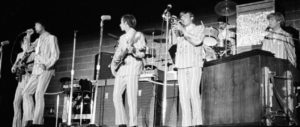 I’ve been in love with this heavy “Shotgun” groove Hammond-laced oddity for some time. The bizarre tone and phrasing of the spoken lyric enhanced by the ectoplasmic ooze of the oscillating organ make the highly distinctive “Alligator Time” both unsettling and irresistibly appealing at the same time. Don’t blame me if its satanic majesty echoes in your head long after its over. I get weird when I can and explore the maximum variation around the parameters of the soul genre’s edges to add texture, variation, and dynamism to my sets. When used sparingly, an incongruent track on the beat at the right time can liven things up like cayenne in a chocolate chip cookie. Throwing an outcast sound into the pan at the right time can also break up a long fluid night – achieving a momentary Brechtian Verfremdungseffekt that activates the dancers’ consciousness before they returning into their bodies, the dance, and the moment refreshed.
I’ve been in love with this heavy “Shotgun” groove Hammond-laced oddity for some time. The bizarre tone and phrasing of the spoken lyric enhanced by the ectoplasmic ooze of the oscillating organ make the highly distinctive “Alligator Time” both unsettling and irresistibly appealing at the same time. Don’t blame me if its satanic majesty echoes in your head long after its over. I get weird when I can and explore the maximum variation around the parameters of the soul genre’s edges to add texture, variation, and dynamism to my sets. When used sparingly, an incongruent track on the beat at the right time can liven things up like cayenne in a chocolate chip cookie. Throwing an outcast sound into the pan at the right time can also break up a long fluid night – achieving a momentary Brechtian Verfremdungseffekt that activates the dancers’ consciousness before they returning into their bodies, the dance, and the moment refreshed.
Searching for details about this one, the first thing I learned is that great minds think alike and personal hero, the legendary Back Door Man Phast Phreddie The Boogaloo Omnibus also turns this one. And from personal experience can attest “Alligator Time” is also a Howie Pyro fave!!! And secondly, my mind was blown to learn Jimmy Stokley and The Exiles are EXILE! The same EXILE who rocketed to #1 on the pop charts with the 1978 Chinnichap disco love maker “KISS YOU ALL OVER!”
The Exiles come from the quiet college town Richmond, Kentucky. Forming in high school as The Fascinations in 1963, their Wikipedia says they became The Exiles “to show support for Cuban refugees,” but a more reliable page says they became The Exiles because, as “long-haired, mod clothes-wearing, rebellious rascals,” they were the town outcasts. They however built a significant regional following as local heroes and rock’n’roll bad boys. 1965 saw the release of their debut, the frantic 1965 frat rocker “Come On,” on the obscure Jimbo imprint. “A Game Called Hurt” followed a year later and “Alligator Time” was the B-Side.
After this they relentlessly pursued their destiny – following their elusive dreams to New York, Chicago, and Los Angeles, road-warrioring dive after dive, town after town, night after night, year after year, and jumping from label to label, recording a smattering of singles on CBS subsidiary Date, Shelby Singleton’s SSS International, Wooden Nickel, RCA, and ATCO/RAK. A bright spot was fan Tommy James’ 30-hour session producing The Exiles cutting his “Church Street Revival” for Columbia. I was particularly impressed with the band’s stint residing in NYC in the late ’60s where they crammed into a single room at the storied Broadway Central Hotel. The grandeur of what was once the largest hotel in the world had spent a century decaying into a murderous Bowery flop house by the time The Exiles made its cots their home 1968. You may know The Broadway Central for its Mercer Arts Center where New York Dolls, Suicide, and a generation of NYC rock’n’roll developed, or from its collapse that shook the city and injured or killed many of its residents in 1973, or even as the site of the notorious murder of robber baron Diamond Jim Fisk in another century. Anyhow, I digress… The band worked really hard and never made it until fifteen years into this epic struggle when Chapman and Chin recorded their Barry White “It’s Ecstasy When You Lay Down Next to Me”-inspired disco pop track “Kiss You All Over” for Warner. It smashed the global pop charts and sat in the #1 spot in the US for four weeks – the 5th most popular song of 1978. Stokely left the stage in 1979 and died of hepatitis-related liver failure in 1985. The remainder of the indestructible aggregation soldiered on to become a country music hit-making institution that continues to record and tour nearly fifty-eight years down the line.
Exile’s official website
an in-depth Exile history
485. Timmy Thomas “Have Some Boogaloo” (Goldwax, 1967)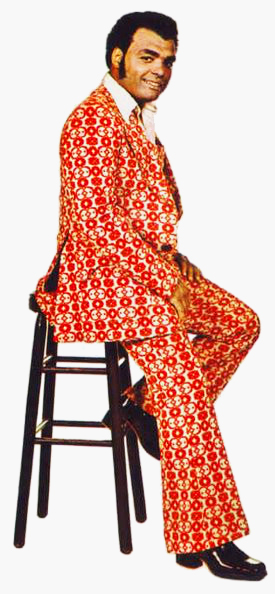 Now its time to “Have Some Boogaloo”! Boogaloo in this case is a reference to the dance and emerging soul style and not the New York melting pot latin soul genre! And definitely not the domestic terrorists who we’re gonna snatch this glorious word and rich history back from!
Now its time to “Have Some Boogaloo”! Boogaloo in this case is a reference to the dance and emerging soul style and not the New York melting pot latin soul genre! And definitely not the domestic terrorists who we’re gonna snatch this glorious word and rich history back from!
You’re hearing the same Timmy Thomas who topped the R&B charts and crossed over to #3 Pop crooning “Why Can’t We Live Together” in 1973 and has been heavily sampled in contemporary music. Not only is Thomas much more than a one hit wonder, but he’s also a first class organ badass who cut his teeth with jazz legends like Donald Byrd and Cannonball Adderly before striking it out on his own. With its rudimentary caveman riff and soul shouting juxtaposed against the tight groove and sophisticated organ workout, “Have Some Boogaloo” is the perfect instrumental for both my raw aesthetic and pragmatic dance party purposes. The band is cookin’ with the entire spice rack, a high flame, and an abundance of grease while still managing to leave plenty space in the pan to emphasize the main ingredient – Thomas’ two handed symphony of wild Hammond B3 oscillations. He’s got levitation!
Goldwax founders Rudolph V. “Doc” Russell and Quinton Claunch get co-writing and production credits here. Not only one of my favorite Memphis labels, but for my money Goldwax is hands-down one the finest soul imprints of all-time. And you’ve definitely shaken your stuff to Timmy Thomas, James Carr, Spencer Wiggins, The Ovations, Percy Milem, O.V. Wright, Wee Willie Walker, Gene Miller, Dorothy Williams, and the rest of the label’s pantheon over and over, year after year at The Clap.
You can still catch Timmy Thomas knocking ’em dead on stages worldwide. I also sometimes get a chance to drop his slower vocal classic “Its My Life” that I copped off of WFMU’s fabulous Todd O Phonic Todd a few years back.
There should be way more about Timmy Thomas online. Here’s a little more on the artiste and his masterpiece “Why Can’t We Live Together”
And a nice NPR Fresh Air piece on Goldwax
And some Goldwax history from BSN
486. Jamo Thomas And His Orchestra “Stop The Baby” (Conlo, 1965): NYNT Soul Clap 500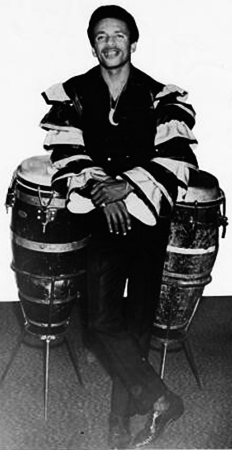 I copped Jamo Thomas’ stunning debut off of Voodoo Funk Records boss/Berlin DJ legend Franco at a WFMU fair in the aughts. Like The Shells’ classic party bomb “Whiplash,” “Stop The Baby” was produced by the legendary Jerry Butler for the short-lived Chicago imprint Conlo in 1965. With its propulsive beat, Memphis guitar, falsetto vocals, fluid dynamism, and Thomas’ loud punchy congas, this one and it’s successor “Must I Holler” don’t sound like any other records I own and don’t fit neatly into any soul sub-genre. “Stop the Baby” pairs well with a variety of beats and sounds and is an ideal transitional record for either switching styles or gradually driving the tempo up early on in a dance party when you need a subtle way to move the rhythm.
I copped Jamo Thomas’ stunning debut off of Voodoo Funk Records boss/Berlin DJ legend Franco at a WFMU fair in the aughts. Like The Shells’ classic party bomb “Whiplash,” “Stop The Baby” was produced by the legendary Jerry Butler for the short-lived Chicago imprint Conlo in 1965. With its propulsive beat, Memphis guitar, falsetto vocals, fluid dynamism, and Thomas’ loud punchy congas, this one and it’s successor “Must I Holler” don’t sound like any other records I own and don’t fit neatly into any soul sub-genre. “Stop the Baby” pairs well with a variety of beats and sounds and is an ideal transitional record for either switching styles or gradually driving the tempo up early on in a dance party when you need a subtle way to move the rhythm.
Jamo Thomas got his start as the percussionist for Bobby Peterson Quintet and played on his popular opus “The Hunch.” In 1962 became Jerry Butler’s bandleader after he left The Impressions. After Butler produced “Stop The Baby,” Jamo laid down the somewhat similar but lesser “Must I Holler” for Chess. His third record was a cover of Herman Kelley and Popcorn Wylie’s “I Spy (For The FBI)” originally waxed by Luther Ingram. The vast popularity of the ’60s James Bond juggernaut not only sparked a spy craze in cinema and television but ripples were felt all over the musical landscape – particularly in soul music where international intrigue was so in vogue that there was a moment when the initials J.B. meant James Bond more frequently than the genre’s star James Brown. Of the resulting plethora of spy and detective themed records, “I Spy” still stands today as one of the top exemplars of the somewhat forgotten sub-genre. Appearing in 1966 on Thomas Records (which is often attributed to Jamo on the web but in real life named after owner Eddie Thomas) “I Spy” not only broke into the U.S. pop charts but also saw a Polydor U.K. release that became an instant mod classic. The song has been infinitely resurrected – hitting the U.K. Top 40 in 1969, rotating nonstop on nightclub turntables, and turning up on countless compilations. Its success inspired the also killer immediate followup “Arrest Me.” Check out dapper Jamo Thomas singing “I Spy (For The FBI)” on the best television show of all time, 1966’s “The !!!! Beat. “
In 1967 Jamo moved on up to Fred Foster and John R’s Sound Stage 7 imprint and into the masterful production hands of Chips Moman at his iconic American Sound Studio. The epic pairing got off to a fine but underachieving start with Thomas adding to the Mother In Law cannon with a greasy yet restrained track repeating the “I Spy” vocal melody “Jive Mother In Law” and its more inspired instrumental flip “Nassau Daddy” referencing the artist’s Bahamian roots. But the team hit the bullseye with their next effort. Keeping with the Caribbean theme, “Bahama Mama” is Jamo Thomas’ masterpiece and a wildly unique kinetic Buttshaker that’ll never stop lighting up parties worldwide.
Jamo Thomas’ sole major label release, the quality self-produced “Education Is Where It’s At” appeared on Decca in 1968. If any kids out there are reading this, listen to Jamo – you gotta stay in school! After a couple of quiet years, the Nassau Daddy returned on Shelby Singleton’s iconic SSS International imprint in 1970 with a bang under the pseudonym “Mr. Jamo” with the ever-groovy one-of-a-kind psychedelic-tinged “Shake What You Brought With You” (thee fab Funky 16 Corners blog lovingly describes its majesty better than i ever could here). His next release also on SSS, “You Just Ain’t Ready,” while solid and respectable, didn’t hit the extraordinary standard achieved by the previous recordings and concluded his recording career until he reappeared thirteen years later for a final bow with the self-produced “(My Jive) Backstabbing Friend” dance 12-inch in 1983. In the meantime Jamo worked at Stax Records promotion department and was the arranger on an Ella Washington LP.
Finally, our protagonist has some standout tracks I just learned about while researching this. Jamo’s Bandito’s have a really cool and unknown 45 on Nassau “Foot Print In The Sand” and he produced some cookin’ instrumentals for his backing band The Party Brothers worth checking out particularly 1967’s sleazy instro “A&T’s Party” and to a lesser extent 1968s perky “Do The Groundhog.”
Other Jamo Thomas 45s I’ve turned at NY Night Train Soul Clap and Dance-Off:
– “Stop The Baby” (Conlo, 1965)
– “Must I Holler” (Chess, 1966)
– “I Spy (For The FBI)” (Thomas, 1966)
– “Arrest Me” (Thomas, 1966)
– “Nassau Daddy” (Sound Stage 7, 1967)
– “Bahama Mama” (Sound Stage 7, 1967)
– “Education Is Where It’s At” (Decca, 1968)
– “Shake What You Brought With You, Pt 1” (SSS International, 1970)
487. Curtis Lee & The KCP’s “Get In My Bag” (Rojac, 1967)
I couldn’t find out many details about this razor-tight relentlessly propulsive pulverizer or the artist. Curtis Lee is clearly not the Curtis Lee of “Pretty Little Angel Eyes Fame” but the KCP’s are the same International Kansas City Playboys who recorded “Dancing Party” in 1963 for NYC’s RSVP Records, backed Chuck Flamingo on the 1965 Rojac classic “What’s My Chances,” and whose northern soul stomper “Quitting Time” appeared on the Motor City’s iconic Wheelsville imprint in 1966. Since this band appeared on New York records, was working with Rojac at the time, and songwriting credits were given to label boss Jack Taylor (plus Kim Tolliver’s prolific and talented husband Fred Briggs), its mysterious that “Quitting Time” appeared on the Detroit-centric label. You don’t have to listen too closely to notice that “Get In My Bag’s” better known flip “Everybody’s Going Wild” is the Wheelsville recording of “Quitting Time” with different vocals and the same backing track Rojac recycled again on Big Maybelle’s equally popular northern soul standard in 1968.
It’s worth mentioning that Rojac/Tayster Records head honcho “Fat Man” Jack Taylor probably didn’t write this song or any other. One of the most powerful, prolific, and longest reigning dope kingpins 116th Street has ever seen, Fat Jack, like so many other label bosses at the time, put his name on songs to pocket the publishing money. But Jack Taylor wasn’t all bad. In addition to reviving the career of Big Maybelle when she was down and out, and giving the world so many killer records on his labels, he flipped the bill for lavish legendary parties for young musicians and hep kids that sometimes lasted for days, and he saved Etta James’ life. A pimp she was dating gave her a vicious beating and was threatening her in the hospital. Etta snuck out disguised in a wig and ran straight to her friend Fat Jack – who got his widely-feared brother and fixer Willy Jack to take care of the pimp. He also opened the legendary opulent Harlem World nightclub in the late 70s that would play a major role in the formative years of Hip Hop. Since he put together the Harlem World Crew, Tay-ster’s final records were some of Hip Hop’s earliest releases. Where’s this man’s bio pic? OK… One last Jack Taylor anecdote. He was tight with pre-fame Jimi Hendrix’s foxy lady, sophisticated scenester Lithofayne Pridgon and she arranged a meeting for the two legends – hoping Fat Jack could help her hardluck hungry boyfriend get a job recording for one of his labels. Taylor agreed to help… But in another way… While Jack Taylor never let the most important rock guitarist of all time record for Rojac/Tay-ster, he was kind enough to offer him another job… Running drugs. Jimi declined and you know the rest of the story.
488. Rex Garvin and The Mighty Cravers – Believe It Or Not (Like, 1967)
The flip of the storming dancefloor destroyer “I Gotta Go Now (Up On The Floor)” is cautionary tale about the dangers of LSD! Rex Gavin admitted that he never went on a trip or had the desire to do so. And you can see why! The chick who tried it here saw vampires crying in the night and the other acid casualty in the song went crazy and thought he was Frankenstein! Kinda like a talk your parents gave ya but in Rex Garvin’s soulfully distinctive voice accompanied by one of his striking arrangements. If you’ve yet to experience The Mighty Cravers, this one is an anomaly in a catalogue of some of the most driving raw soul dance party anthems of all time. So many of 45 jocks like myself cut our teeth on the band’s ubiquitous masterpieces “Sock It To ‘Em J.B.,” “Soul Food,” and of course, the one almost all of my NYC DJ friends have shared in common across generations, their stunning and shakin’ debut “Emulsified” (fab DJ and Little Killer Andy Maltz’s break-in-case-of-emergency track!).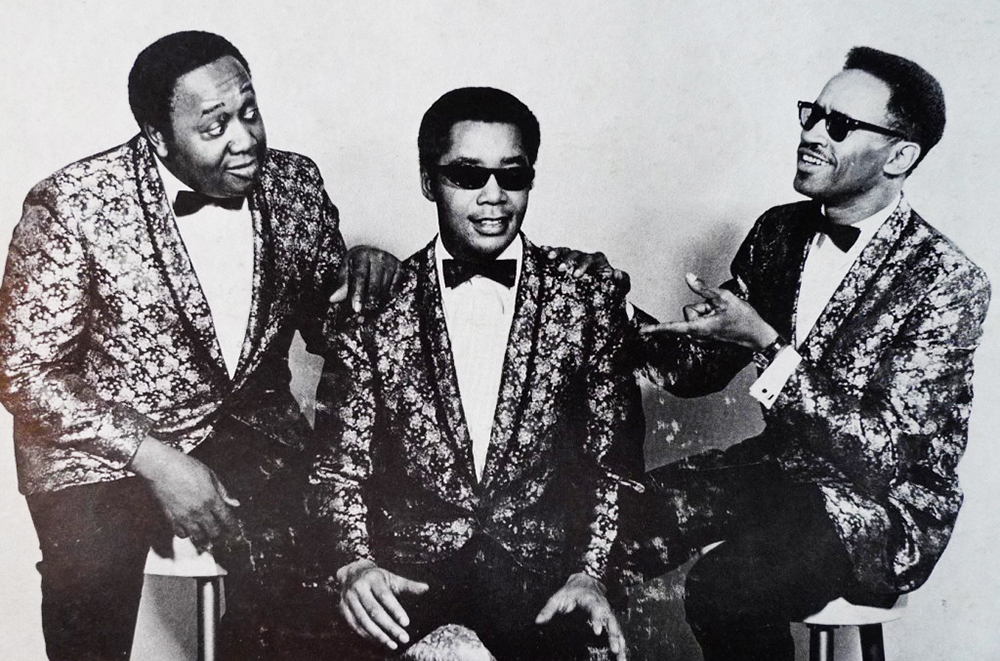
Rex Garvin was born in Harlem and raised in the Bronx where his neighbor Zelma “Zell” Sanders roped him into the music biz in his early teens. An under-recognized music industry pioneer and resourceful visionary who discovered, managed, produced, incubated, and recorded some of the most important NYC musicians of the late ’50s and early ’60s, Sanders is best known as the founder and boss of the J&S Records and its offshoot labels. At the dawn of her mini-empire the 14-year-old Garvin helped Sanders put together The Hearts – singing harmony, arranging, and playing piano as their debut single “Lonely Nights” rocketed to #8 on the national R&B Charts. By his later teens wunderkind Rex was the principal songwriter, arranger, and bandleader at J&S – penning, arranging, and performing on Johnnie and Joe’s Top Ten Pop hit “Over The Mountain, and Across The Sea.” After a solo single and a duet with Marie Knight, he put together Rex Garvin and The Mighty Cravers and exploded out of the gate with “Go Little Willie”/”Emulsified” on both Epic and Okeh – kicking off the epic sequence of dance floor classics that nightclub DJs continue to turn over and over again around the world. Garvin’s gritty early 60s sound rapidly evolved with the times into soul and funk before his recording career waned at the end of the decade. Unlike many fallen stars of his era, he never had interest in a comeback and remained reclusive until his death. Rex Garvin remains one of the all-time great soulmen and deserves much attention outside of the 45 world.
Check out this rare interview with him from 2011 shortly before his death at Other Sounds
And a MUST-READ obituary in Paste by a man who became friends with Garvin working in Atlanta where this supremely accomplished musician and author of so many iconic records spent his final years working as a janitor.
Other Rex Garvin and The Mighty Cravers 45s turned at NY Night Train Soul Clap and Dance-Off:
– Emulsified (Okeh, 1961)
– Soul Food (Keynote, 1963)
– Sock It To ‘Em J.B. (Like, 1966)
– I Gotta Go Now (Up On The Floor) (Like, 1967)
– Raw Funky (Uptown, 1968)
489. Thee Commons “La Fiesta” (Steady Beat, 2016)
Every now and then I turn a contemporary record at Thee Clap and “La Fiesta” never fails to keep the floor moving – spicing up the party with off-the-grid variation but not stretching too far from the rhythm and focus of the night. I met these dudes and caught their killer band for the first time when they opened Thee Midniters/The Premiers Soul Clap and Dance-Off at L.A.’s Regent Theater. Anyone who’s been to my parties knows I’m in love with 60s west coast Chicano rock and soul and Thee Commons, now Tropa Magica, who hail from East L.A. and were lucky enough to grow up surrounded by this fantastic sound and rich culture, remain respectful to this tradition while exploring their own distinctive “Psychedelic Cumbia Punk” aesthetic. And “La Fiesta” is truth in advertising – 100% pure party vibes!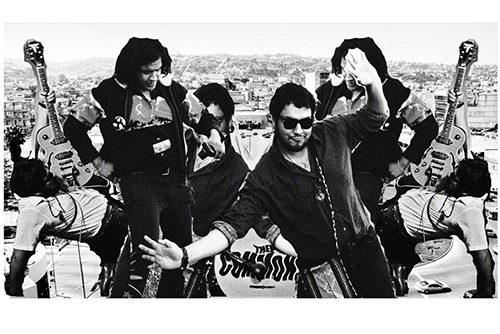
Tropa Magica (formerly Thee Commons) official web site
490. Dickey & Gloria “Mr. Clean” (Diamond, 1964) Dickey & Gloria and Winfield Parker’s versions of this mighty groover both have their own merits so I had to flip a coin here. While I can’t find out who Gloria is, Dickey is enduring North Carolina soul legend Dicky Williams whose epic path across many musical eras commenced his 1960 hit debut on Johnny Vincent’s Ace Records subsidiary Vin “Tee-Na-Na.” Despite his soulful and distinctive voice, Williams’ recorded output was sporadic and mostly restricted to fly-by-night labels until his career picked up steam in the 70s and climaxed in the ‘90s when he became a late-20th century chitlin circuit institution with a couple of X-Rated underground hits and a steady stream of contemporary southern soul releases.
Dickey & Gloria and Winfield Parker’s versions of this mighty groover both have their own merits so I had to flip a coin here. While I can’t find out who Gloria is, Dickey is enduring North Carolina soul legend Dicky Williams whose epic path across many musical eras commenced his 1960 hit debut on Johnny Vincent’s Ace Records subsidiary Vin “Tee-Na-Na.” Despite his soulful and distinctive voice, Williams’ recorded output was sporadic and mostly restricted to fly-by-night labels until his career picked up steam in the 70s and climaxed in the ‘90s when he became a late-20th century chitlin circuit institution with a couple of X-Rated underground hits and a steady stream of contemporary southern soul releases.
491. Winfield Parker “Rockin’ In The Barnyard” (Ru-Jac, ?)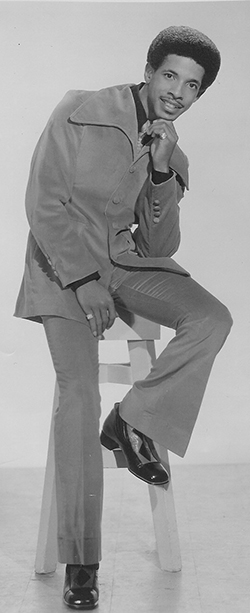 I was so sad to hear about Baltimore soul man Winfield Parker’s passing in January. He’s been very eager and active in recent years and we were just waiting for the right circumstance to bring him back to NYC. This raw but effervescent slice of character with an unknown release date sometime between 1963-1964 was his second record. The uniquely geometric proto-funky rhythm and bassline, the very rock’n’roll guitar solo, and the economic swelling of the soul horns in all the right places leave plenty of space for Parker’s distinctive timbre, storytelling, and Charm City charm to dominate this track that is oxymoronically busy yet restrained. While “Rocking In The Barnyard” is lo-fi even by Ro-Jac standards, and I am guilty of imagining what it may have sounded like with better production, and it would still be a highly unique record regardless, it wouldn’t possess the same spectacularly distinctive weirdness if it inched much closer sonic regularity. Parker was born 35 miles outside of Baltimore in Cooksville, Maryland, and had first-hand experience rockin’ in the barnyard. You can also file this gem in the under-explored agricultural soul subgenre and part of the rich boundary-defying history of farm-themed dance records.
I was so sad to hear about Baltimore soul man Winfield Parker’s passing in January. He’s been very eager and active in recent years and we were just waiting for the right circumstance to bring him back to NYC. This raw but effervescent slice of character with an unknown release date sometime between 1963-1964 was his second record. The uniquely geometric proto-funky rhythm and bassline, the very rock’n’roll guitar solo, and the economic swelling of the soul horns in all the right places leave plenty of space for Parker’s distinctive timbre, storytelling, and Charm City charm to dominate this track that is oxymoronically busy yet restrained. While “Rocking In The Barnyard” is lo-fi even by Ro-Jac standards, and I am guilty of imagining what it may have sounded like with better production, and it would still be a highly unique record regardless, it wouldn’t possess the same spectacularly distinctive weirdness if it inched much closer sonic regularity. Parker was born 35 miles outside of Baltimore in Cooksville, Maryland, and had first-hand experience rockin’ in the barnyard. You can also file this gem in the under-explored agricultural soul subgenre and part of the rich boundary-defying history of farm-themed dance records.
Winfield Parker earned his wings as as a teenage sax player in Baltimore/DC’s bands The Veejays and Sammy Fitzhugh and the Moroccos. He was soon blowing his top on the road in Little Richard’s band before putting together his own group The Imperial Thrillers. His booking agent Rufus Mitchell convinced him to go solo and when Mitchell established his storied Ru-Jac imprint in 1963, Parker had a dedicated record label for five years. After eight singles Parker label hopped up to Atco over to Arctic and up to Wand for one release on each label. While his ’60s records didn’t ring a whole lotta cash registers in their time, they’ve since become wildly in demand and expensive in the world of soul collectors and DJs. In 1971 Spring records had Parker record Edwin Starr’s 1966 Detroit soul standard “S.O.S. (Stop Her On Sight)” and the unlikely candidate became his only hit – climbing to #48 on the national R&B charts. He had one more single on Spring and another on Lloyd Price’s GSF before disappearing into the obscurity and hard times that were the fate of so many ’60s soul artists as the ’70s progressed. He wound up in prison on drug charges and re-emerged in the ’80s as Baptist minister and Gospel singer. As interest in his records grew in the 21st century, he began a triumphant return to secular music to the delight of soul fans everywhere. In 2016 Omnivore helped further revive his career with a collection of his Ro-Jac sides “Mr. Clean” – making his lost records available digitally for the first time and garnering piles of positive press.
Other Winfield Parker 45s turned at NY Night Train Soul Clap and Dance-Off:
– Mr. Clean (Ru-Jac, ?)
– I Love You Just The Same (Ru-Jac, ?)
A solid Winfield Parker article from “In The Basement” republished on his own site. Have a look around after for sounds, video, etc.
Hear Winfield Parker discuss his career on WTMD. Including his hard-luck story about how Otis Redding originally planned to record “Sweet Soul Music” with him before Arthur Conley.
I digitized my 45 of his version of “Mr. Clean” here
492. Pearl Woods “Don’t Tell It All” (Crackerjack, 1962)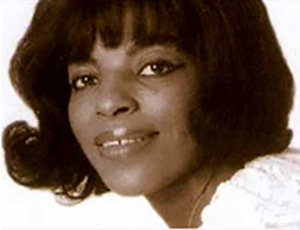 Not only a dazzling exemplar of unsung hero Pearl Woods’ lyrical prowess, cool phrasing, and powerful pipes, “Don’t Tell It All” is also testament to her prodigious songwriting talents. In addition to much of her own material, Pearl Woods penned one of the most widely covered soul songs its time, Etta James’ “Something’s Got A Hold On Me,” plus her other classics “Next Door To The Blues,” “Stop The Wedding,” “Do Right,” and “Tighten Up Your Own Thing,” and dozens of other sides for a variety of legendary figures.
Not only a dazzling exemplar of unsung hero Pearl Woods’ lyrical prowess, cool phrasing, and powerful pipes, “Don’t Tell It All” is also testament to her prodigious songwriting talents. In addition to much of her own material, Pearl Woods penned one of the most widely covered soul songs its time, Etta James’ “Something’s Got A Hold On Me,” plus her other classics “Next Door To The Blues,” “Stop The Wedding,” “Do Right,” and “Tighten Up Your Own Thing,” and dozens of other sides for a variety of legendary figures.
Lily Pearl Woodward was born in St. Matthews, North Carolina in 1933 and made her way to New York in 1951 where she became Pearl Woods and recorded a couple of singles for Dot Records in 1956. In the early 60s she was writing material, sometimes with the uber-prolific Leroy Kirkland, for the likes of Etta James, Jackie Wilson, Jimmy Reed, Sam and Dave, The Diamonds, Maxine Brown, Yvonne Baker, Walter Jackson, and the Marcels while recording a winning streak of blazing sides of her own: “Sippin Sorrow” (backed by The Upsetters!), “Don’t Tell It All,” “I’ll Be A Crybaby” (with Leroy Kirkland Orchestra and The Gems: Freddy Johnson, Doris Troy, and Gilbert Monk), “Sloppin’,” and “Something Touched Me”. She also started her own Pearl-Tone imprint in 1964 with the release of two singles by her husband and collaborator Freddy Johnson who was in The Treys with Maxine Brown. While her recording career began to fizzle as the decade wore on, concluding with The Pearl Mixed Company’s funky “Have You Had Any Lately?,” she remained busy as a full-time traveling radio rep for Duke/Peacock while penning Bobby Blue Bland’s “Poverty,” “That Did It,” “You’re All I Need,” and “A Piece of Gold,” Junior Parker’s “Just Like A Fish,” and Little Milton’s “I Play Dirty.” Johnson saved up her Duke/Peacock earnings to start up FrePea Music Publishing and open the Soul Shack record store on the Upper West Side with Johnson before finding Jesus in 1973 and escaping from New York for Columbia, SC. The rambling couple wound up at Jimmy Swaggart Ministries in Baton Rouge in 1979 before they split for Arlington, TX in the ‘80s where Pearl was a lay minister and nurse, produced a couple of Johnson’s gospel LPs, and hosted a religious TV show “Beautiful Truth.” Charles Fahey reported in 2003’s “Soul of The Man” that the couple was at the time in Florida operating Pearl Johnson Ministries. Pearl Woods passed away in Fort Worth in 2010.
Other Pearl Woods 45s turned at NY Night Train Soul Clap and Dance-Off:
– Sippin’ Sorrow (Charge, 1961)
– I’ll Be A Crybaby (From Now On) (Wall, 1962)
– Sloppin’ (Wall, 1962)
– Something Touched Me (Mala, 1965)
493. Al White and The Hi-Liters “Thread The Needle” (Tune-Kel, 1967)
Despite its geography near the end of this list, I typically deploy this exquisite beyond category New Orleans proto-funk instrumental to build a foundation early on in a night. Altruistically restraining each of their individual abilities to the greater good, slamming into a relentlessly heavy rhythm, Al White and The Hi-Liters build a tension that often feels ready to explode but holds tight throughout. The horns swell, the guitar and keyboard leads snake around with a restrained passion but this beast refuses to budge. Attacking every note and beat with authority, precision, and soul, the tuff minimalism, unique groove, and killer production combine to keep “Thread The Needle” feeling fresh decades later.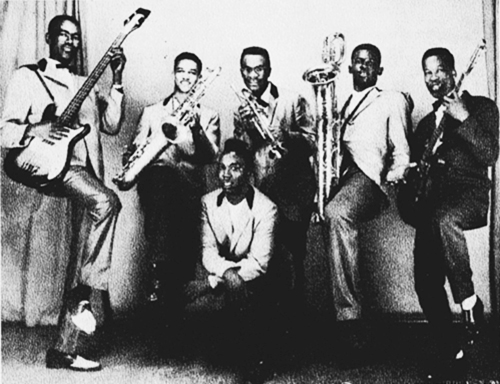
Despite their longevity, the enigmatic Al White and The Hi-Liters had only three known singles since they formed all the way back in 1958. By the time this dynamic aggregation laid down their final single they’d existed throughout most of the hyper-fertile second golden age of Crescent City music. The quantity and quality of the talent in that particular time and place is unfathomable and still unprecedented. Walking amongst the giants, I imagine it’d be easy to get lost in the shadows. Nonetheless the Al White and the Hi-Liters backed the likes of Sam Cooke, Irma Thomas, Jimmy Reed, and Chuck Berry on the road and were session players at Cosimo Matassa’s legendary Cosimo Recording Studios where this was cut. You can tell because of the seven-digit “Cosimo Code” on the label (165-2194). You can also hear them backing Tammy McKnight on number 494 on this list “Take Away These Chains.”
There’s an entire web site dedicated to the discovery of the Cosimo Code and the incredible man whose studio environment and engineering played such an integral part in the canon of Big Easy music and establishment of rock’n’roll in general.
Here’s the only page I could find online about Al White and The Hi-Liters
494. Tammy McKnight “Take Away These Chains” (Athens, 1964) (nit-picky warning: this one of the couple of second presses of the 500 – released a few months after but same sound etc)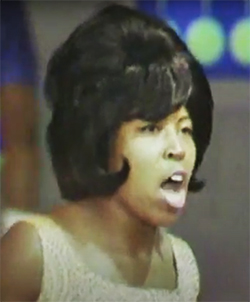 Mysterious NOLA diva Tammy McKnight delivers this one with irrepressible soul over Al White and The Hi-Liters delivering the goods behind her hard and heavy. Dig that muscular beat!
Mysterious NOLA diva Tammy McKnight delivers this one with irrepressible soul over Al White and The Hi-Liters delivering the goods behind her hard and heavy. Dig that muscular beat!
The Satin imprint that originally released “Take Away These Chains” only had two other singles – both also charming slices of raw 1963 Big Easy attitude: Al White and The Hi-Liters “Johnny B. Good” and Alex Spearman’s nonsense rocker to end all nonsense rockers “Mama-Ka-Toko-Laka-Poo-Poo-Yay.” While “Take Away These Chains” was picked up by Nashville’s Athens imprint a few months later, there aren’t a lot of copies floating around which tells us they didn’t do a whole lot to make “Take Away These Chains” fly. Though Tammy McKnight was immortalized lip-synching this tune on the best TV show of all time “The !!!! Beat” (see below link), it must’ve been too little too late – three years after its release when her single would’ve been nearly impossible to locate. Her only other 45, a cool pair of 1967 ballads “Don’t Rub It In” and “Stop These Teardrops” (a completely different song than the Lavelle White classic), are catalogued right before Al White and The Hi-Liters “Thread The Needle” on Tune-Kel and the Cosimo Codes for her sides are sandwiched between the Al White sides numerically – which means they were likely recorded on the same day at Cosimo Recording Studios and the Hi-Liters were backing her once again four years later! Leading me to wonder if she was the featured vocalist in their show or had a similar relationship with the band? Either way, here they are linked by destiny again over a half-century later – numbers 493 and 494 on this list.
Check out Tammy McKnight being fabulous with “Take Away These Chains” a go go on “The !!!! Beat” in 1966! The set, the band, the dancers, and the overall ambience is my idea of heaven…
495. Chris Taylor and music by The Links “Basketball” (Big Thunder, 1963)
A bouncy NOLA obscurity with a rhythm you could dribble or dance to also turned by Mr Fine Wine and DJ Pasta…. Slam dunk! While I couldn’t find any information about Chris Taylor on the internet, his nephew found my original YouTube of this gem and was kind enough to share the following:
“Chris Taylor’s real name was Christopher Scamardo. The record people said his name was too Italian. He was born on August 11, 1941 in New Orleans LA, 3rd of 5 children. This recording was done in 1963. So he was about 22 years old at the time. The flip side of this 45 has a slow song named Dolly. I’m fairly certain this was his only recording and, “The Links” I don’t know who they were. There was some touring which took place with the band and at least one appearance on The John Pela Show. Chris passed away, in Metairie LA, a suburb of New Orleans, LA on May 30, 2018, about 11 days prior to my writing this. He was my uncle. This song online forever immortalizes his time on this earth. RIP.”
496. Harvey & the Seven Sounds “(On The Streets of) New York City” (Cuca, 1963)
Don’t be put off by the sloppy intro, the raw charm of this lo-fi street corner snapper for the soul era is gonna sneak up behind ya, crawl in your ear, and stick in your head. Harvey Scales’ second release on Wisconsin’s eclectic Cuca imprint after the equally stellar “The Clock,” is his first as Harvey and the Seven Sounds. “New York City’s” excellent and more frequently played B-Side “Glamour Girl” is the smoother ride of the two – but I prefer the personality, raw emotion, and distinctiveness of this memorable side. My copy of this one is shiny and immaculate and the quirks you hear are a part of the mysteriously rough character of the original master.
At the dawn of his epic six-decade career, in a studio nearly a thousand miles away, 21 year-old Harvey Scales conjures a wistful image of a classic New York romance embittered by the pain of lost love. For years I was baffled by his lyric about “the time we had in Yellowstone Park.” Did they take a trip out west after they met? Or did he mean Central Park? It wasn’t until I moved to Ridgewood that I learned about the existence of Yellowstone Park in Kew Gardens and I wonder if Harvey included it in the narrative because he had stayed in Queens at some point? In real life “Milwaukee’s Godfather of Soul” didn’t make good on his promise to never return to our heartbreak city as Harvey Scales and his Seven Sounds grew into one of the hottest dance bands in the land by the late ‘60s and he lit up Empire City stages on and off from the late 60s to the 21st Century when he made a dramatic comeback at prestigious gigs like Dig Deeper and The Ponderosa Stomp at Lincoln Center. When I gathered my favorite artist for my first soul revue, Harvey Scales was near the top of the list but by he time I contacted him his health was declining and I was sad to learn he passed away not long after. 
Born in Osceola, Arkansas, moving to South Bend, Indiana, and then raised in Milwaukee where his father worked on the assembly line at American Motors Corp., like so many of the all-time greats, Harvey Scales’ fantastic voyage began in ‘50s teen harmony groups. Briefly in The Esquires before they got on up to Top 40 fame, he went solo as “Twistin’ Harvey” and assembled his own full show band Harvey and The Seven Sounds. He signed to Sauk City, Wisconsin’s eclectic and sometimes amazing Cuca imprint in 1963 where over the next few years he released a handful killer singles that documented his band rapidly evolving into a well-oiled razor-tight heavy rhythm machine. Harvey and his mighty Seven Sounds ascended to the pinnacle of their sound when they signed to Milwaukee’s Magic Touch label in 1967 – laying down some of the most unique, dynamic, and explosive good-time soul dance party anthems ever for the next couple of years.. Harvey next moved on up to big labels like Mercury, Chess (and Cadet), Stax, and Casablanca. He wasn’t only prolific as a dynamite singer, dancer, entertainer, and band leader, but also as a songwriter – co-authoring the 1976 Johnny Taylor #1 pop smash “Disco Lady” and other hits for the likes of The Dells, The Mad Lads, Z.Z. Hill, and The O’Jays.
Harvey Scales isn’t only popular with DJs, collectors, dancers, and soul fans but has inspired artists from across the musical spectrum from Prince to James Chance. “Love-Itis” became ’60s garage band standard waxed by The Sonics, Mandala, etc. in the ‘60s. The Fabulous Flames did a reggae interpretation on Trojan in 1973 that’s sometimes turned at The Clap and Soul Scream. Atlantic released J. Geils Band’s take on “Love-Itis” in 1975 as both a single and the kickoff track on their “Hotline” LP and their live version the next year is a star of the “Blow Your Face Out” LP. Finally you hear Harvey Scales’ music sampled everywhere – most notably in The Beasty Boys “Shake Your Rump.” Get down with the Seven Sounds!
Other Harvey Scales 45s I’ve turned at NY Night Train Soul Clap and Dance-Off:
– “The Clock” (Cuca, 1963) (as Twistin’ Harvey)
– “Get Down” (Magic Touch, 1967)
– “Love-Itis” (Magic Touch, 1967)
– “Broadway Freeze (Magic Touch, 1968)
– “Love Is A Gas” (Magic Touch, 1969)
– “Trying To Survive” (Magic Touch, 1969)
– “The Funky Yolk” (Chess, 1970)
I’ll sldo keep keeping an eye out for an o.g. copy of “Trackdown” to turn for ya one day!
Harvey Scales 2008 dance class on Chic-A_Go-Go
In-depth 2008 Harvey Scales interview by Bob Abrahamian on Chicago’s WHPK 88.5FM Sittin’ In the Park
“Broadway Freeze” live in 2008 at Dig Deeper at Five Spot Supper Club backed by Sweet Divines and the Divine Soul Rhythm Band
497. Ray Barretto “A Deeper Shade of Soul” (Fania, 1969)
You’d be hard pressed to recall a Soul Clap where I haven’t pulled out at least one of iconic Nuyorican percussionist and bandleader Ray Barretto’s kinetic boogaloos to heat up the party. I often turn “A Deeper Shade of Soul” however in the wee wee hours when the tempo drops. Heavies know this track from the conclusion of the first side of Barretto’s groundbreaking “Acid” LP, gamers recognize it from “Grand Theft Auto,” and Gen-X is familiar with the chorus and melody from Urban Dance Squad’s ubiquitous 1991 Top 40 hip hop interpretation. “A Deeper Shade Of Soul” is a strong closer for an eclectic ’60s soul party not only because of its thematic title/chorus but also its explicit melting pot soul stew references like “what I say” refrains and its effortless deviation into the “Knock On Wood” riff. The trademark Ray Baretto “togetherness” self-consciously expresses the open-mind inclusive adventurism of the boogaloo movement and sends dancers off into the cityscape at dawn with warm fuzzy feelings. Quintessential New York music!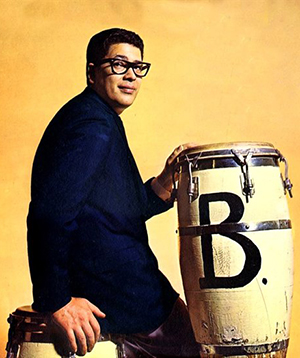 The trajectory of Ray Barretto’s musical journey is almost impossible to fathom. The son of Puerto Rican immigrants raised by a single mother, the young jazz aficionado was one of many thrust into the future by Dizzy Gillespie’s “Manteca.” The first shots of the Afro-Cuban jazz revolution inspired Barretto to achieve such a high level of conga mastery that a wowed Charlie Parker invited him to join his band. Barretto spent the ’50s playing a percussive role in the mambo movement in the orchestras of Jose Curbelo and the trailblazing Tito Puente during some of his most groundbreaking years. By the ’60s Barretto’s hard hands and conga innovations were widely recognized and he worked as a first-call session player for the top jazz labels (Blue Note, Prestige, etc). In 1961 he put together his own and Charanga Orchestra to record a unique fusion sound best described by the song titles “Blue Pachanga”/”Jazz Pachanga” for NYC’s legendary Riverside jazz imprint. And he hit gold in 1963 on another iconic NYC label, George Goldner’s latin Tico Records, as the boom of his infectious dance party bomb “El Watusi” was felt far beyond the jazz and latin worlds – catapulting into the US pop charts for months and crossing borders, oceans, and hemispheres to become a monster international hit. His relentless New York work ethic resulted in an infinite stream of dozens of albums and over a hundred singles. Not only wasn’t only prolific, Barretto’s restless experimentalism was instrumental in the foundation, popularization, and evolution of the boogaloo and salsa movements. Barretto’s bold forays into new sonic territory continued to expand along with his popularity into the 70s – resulting in all the trimmings of mainstream popularity: Grammys, major label releases, and guest spots with rock stars (The Rolling Stones, The Bee Gees, etc). And his indestructible hard hands never stopped exploring new terrain as he continued challenging himself, his bands, and his listeners up until his death in 2006.
The trajectory of Ray Barretto’s musical journey is almost impossible to fathom. The son of Puerto Rican immigrants raised by a single mother, the young jazz aficionado was one of many thrust into the future by Dizzy Gillespie’s “Manteca.” The first shots of the Afro-Cuban jazz revolution inspired Barretto to achieve such a high level of conga mastery that a wowed Charlie Parker invited him to join his band. Barretto spent the ’50s playing a percussive role in the mambo movement in the orchestras of Jose Curbelo and the trailblazing Tito Puente during some of his most groundbreaking years. By the ’60s Barretto’s hard hands and conga innovations were widely recognized and he worked as a first-call session player for the top jazz labels (Blue Note, Prestige, etc). In 1961 he put together his own and Charanga Orchestra to record a unique fusion sound best described by the song titles “Blue Pachanga”/”Jazz Pachanga” for NYC’s legendary Riverside jazz imprint. And he hit gold in 1963 on another iconic NYC label, George Goldner’s latin Tico Records, as the boom of his infectious dance party bomb “El Watusi” was felt far beyond the jazz and latin worlds – catapulting into the US pop charts for months and crossing borders, oceans, and hemispheres to become a monster international hit. His relentless New York work ethic resulted in an infinite stream of dozens of albums and over a hundred singles. Not only wasn’t only prolific, Barretto’s restless experimentalism was instrumental in the foundation, popularization, and evolution of the boogaloo and salsa movements. Barretto’s bold forays into new sonic territory continued to expand along with his popularity into the 70s – resulting in all the trimmings of mainstream popularity: Grammys, major label releases, and guest spots with rock stars (The Rolling Stones, The Bee Gees, etc). And his indestructible hard hands never stopped exploring new terrain as he continued challenging himself, his bands, and his listeners up until his death in 2006.
Other Ray Barretto 45s Jonathan Toubin has turned at NY Night Train Soul Clap and Dance-Off:
– El Watusi (Columbia, 1965)
– Soul Drummers (Fania, 1968)
– Hard Hands (Fania, 1969)
– Love Beads (Fania, 1969)
– Together (Fania, 1969)
– New York Soul (Fania 1969)
– Right On (Fania, 1971)
498. Rudy Lambert “Jamboree” (Junior, 1961)
This obscure B-Side to Rudy Lambert’s stroller “I’ll Do It” is a longtime personal favorite and sometimes an opener when I’m in the mood to weird it up from the first spark and slide into the party with a surreal dreamlike ambience. Oozing with mysterious feel, moaning vocals, wailing sax, and handclaps, this genre-defying eccentric Bay Area masterpiece is a unique entity unto itself. While you don’t hear sole release on Berkeley’s Junior imprint every day, I witnessed the fabulous DJ BeyondaDoubt give it a daring turn at one of her legendary Portland soirees.
I couldn’t locate any information about Rudy Lambert but his third uber-rare release, “Love” on Club 7 label, garnered some contemporary attention when it was re-released by Tramp Records a few years back.
499. Prince Buster “The Dark End Of The Street” (Blue Beat, 1967)
I love turning rocksteady covers of soul tracks at The Clap to slow the tempo late at night and add some variation to the four hour set. “Dark End Of The Street” is of course one of the ultimate soul compositions and one of the genre’s most covered songs across the musical spectrum. I was first moved by its power in my teens via the Flying Burrito Brothers “Gilded Palace of Sin” version and have heard dozens of interpretations since. While I’m not certain anything comes close to James Carr’s stellar original, I’m always impressed by how the song’s versatile construction translates smoothly across race, gender, geography, musical aesthetics, and time.
Penned by Dan Penn and Chips Moman in Memphis during the break in a card game – the two legends instantly hit the bullseye achieving their goal to “come up with the best cheatin’ song. Ever” – and fittingly did so in a motel room. Their old Muscle Shoals collaborator, Hi/Goldwax Records co-founder and prolific session guitar badass Quinton Claunch, let them use his room to compose “Dark End Of The Street” under the condition that they reserved the song for the incredible force of nature that was James Carr. And thirty minutes later the song was complete and they were back at the card table.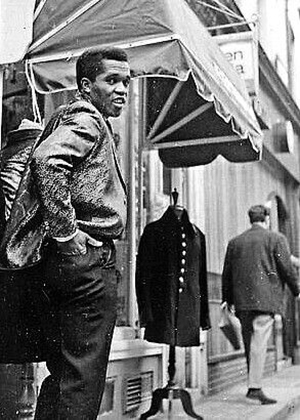 One of the most important and enduring figures in Jamaican music, Prince Buster should need no introduction. He worked for Coxone Dodd in the formative Jamaican sound system era and by the early ’60s opened the valve to an unprecedented flood of writing, production, and singing credits that not only make up a good chunk of reggae’s most canonical and influential tracks, but also helped form, crystallize and evolve both the ska and rocksteady movements. He put together the Prince Buster All-Stars to play on his productions and started his own record labels Wildbells/Buster Wild Bells, Voice Of The People, Soulsville Center, Islam, Olive Blossom and, Prince Buster/Prince Buster Records Shack. In 1964 Muhammed Ali invited Buster to a Nation of Islam meeting in Miami that inspired the Blue Beat star to convert and devote much of his life and work to his newfound faith. By the time Prince Buster’s star was fading in the 70s, around the point where you see him playing the DJ in “The Harder They Come,” he’d recorded hundreds of sides – so many of which stood the test of time and are still spun everywhere by DJs, covered by bands, and enjoyed by fans. The other happy ending to this story is that the Two-Tone bands covered so many of his classics (or in Madness’ case, named themselves after his song) that curiosity about Prince Buster and his work hit an all-time international high in the ’80s and never diminished. He regularly re-entered the studios starting in the ’90s while witnessing the wide and regular re-release, compilation, and anthologization of his older recordings. He also remained a top draw legacy act and in high demand on stages worldwide until his death in 2016.
One of the most important and enduring figures in Jamaican music, Prince Buster should need no introduction. He worked for Coxone Dodd in the formative Jamaican sound system era and by the early ’60s opened the valve to an unprecedented flood of writing, production, and singing credits that not only make up a good chunk of reggae’s most canonical and influential tracks, but also helped form, crystallize and evolve both the ska and rocksteady movements. He put together the Prince Buster All-Stars to play on his productions and started his own record labels Wildbells/Buster Wild Bells, Voice Of The People, Soulsville Center, Islam, Olive Blossom and, Prince Buster/Prince Buster Records Shack. In 1964 Muhammed Ali invited Buster to a Nation of Islam meeting in Miami that inspired the Blue Beat star to convert and devote much of his life and work to his newfound faith. By the time Prince Buster’s star was fading in the 70s, around the point where you see him playing the DJ in “The Harder They Come,” he’d recorded hundreds of sides – so many of which stood the test of time and are still spun everywhere by DJs, covered by bands, and enjoyed by fans. The other happy ending to this story is that the Two-Tone bands covered so many of his classics (or in Madness’ case, named themselves after his song) that curiosity about Prince Buster and his work hit an all-time international high in the ’80s and never diminished. He regularly re-entered the studios starting in the ’90s while witnessing the wide and regular re-release, compilation, and anthologization of his older recordings. He also remained a top draw legacy act and in high demand on stages worldwide until his death in 2016.
500. Gas and The Funk Factory, “The Goodnight Song” (Brunswick, 1970)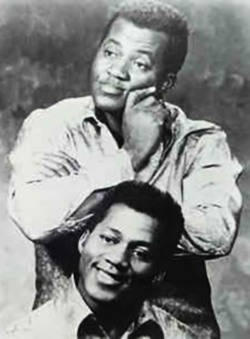 The flipside of the mindblowing “Everybody Get Some (Love)” was cut by The Soul Twins under new pseudonym Gas and the Funk Factory for their final release. “The Goodnight Song” not only concludes this list but also closes so many parties (and is the final bow of The Soul Twins’ brief but notable recording career). The song’s protagonist finally works up the nerve to ask the girl he’s been eying for a dance before she drifts off into the night. The magnetic intro riff, re-established and built upon throughout, is lifted from Isaac Hayes’ canonical 1969 cover of “By The Time I Get To Phoenix” (from his game-changing “Hot Buttered Soul” LP!) – the track, and thus this melody, was all over the soul world’s minds, ears, and subconscious at the time “The Goodnight Song” was recorded. This is a slow one but is pushed along by a metronomic heavy funky beat, tight groove, and the shimmer of a mournful guitar tremolo at the top of the mix. The sweat-drenched dynamic duo trades lines, gospel testifies, and harmonizes their way up and out and into the stratosphere! The Soul Twin’s did not go gentle into that goodnight…
The flipside of the mindblowing “Everybody Get Some (Love)” was cut by The Soul Twins under new pseudonym Gas and the Funk Factory for their final release. “The Goodnight Song” not only concludes this list but also closes so many parties (and is the final bow of The Soul Twins’ brief but notable recording career). The song’s protagonist finally works up the nerve to ask the girl he’s been eying for a dance before she drifts off into the night. The magnetic intro riff, re-established and built upon throughout, is lifted from Isaac Hayes’ canonical 1969 cover of “By The Time I Get To Phoenix” (from his game-changing “Hot Buttered Soul” LP!) – the track, and thus this melody, was all over the soul world’s minds, ears, and subconscious at the time “The Goodnight Song” was recorded. This is a slow one but is pushed along by a metronomic heavy funky beat, tight groove, and the shimmer of a mournful guitar tremolo at the top of the mix. The sweat-drenched dynamic duo trades lines, gospel testifies, and harmonizes their way up and out and into the stratosphere! The Soul Twin’s did not go gentle into that goodnight…
These Burlington, North Carolina biological soul brothers moved to Detroit as adolescents and, like most of their musical generation, cut their teeth in gospel before entering the secular realm. They recorded a handful of cool singles as The Soul Twins in the late ’60s and are best known for their first – the 1967 Northern Soul party standard “Quick Change Artist” on Karen. They’re also remembered for their final release as The Soul Twins, Sam and Dave-ish stormer “She’s The One” backed with the cool ballad “Mr. Independent” on Duke/Peacock don Don Robey’s Back Beat imprint.
If you want to go a little deeper into the life and work of this fantastic twosome, once again the only detailed information on the web comes from consummate researcher and enthusiast Sir Shambling:
Other Soul Twins 45s turned at NY Night Train Soul Clap and Dance-Off:
– She’s The One (Back Beat, 1969)
– Everybody Get Some (Love) (Brunswick, 1970)
Supplemental Track: Winfield Parker “Mr. Clean, Pt. 1” (Ru-Jac, ?)
Winfield Parker’s ever-groovey cover of Dickey and Gloria’s “Mr. Clean” lost a coin toss with the original for inclusion on my NYNT Soul Clap 500 list but its definitely more than worth checking out! This version is looser, has prominent syncopated jazzy piano swinging the song forward hard and heavy, stellar elegant horn harmonies, and Parker’s inimitable vocal stylings. I prefer the music and production here. But its disadvantage in my book is its a bit of a monologue as the women’s role is reduced to a series of quick informal shouts from way out in the back. The advantage of Dickey and Gloria’s original over the cover is that its a duet and thus more of a dialogue that balances Mr. Clean’s boasting by taking him down a notch while Gloria’s powerful growl adds extra texture when juxtaposed against Dickey’s soulful fluidity. I love both tracks for different reasons and thus it was a hard call!
Supplemental Track: Randolph Walker “You’ll Lose Your Love” (Mala, 1967)
I’m adding this side to illustrate the distinctive raw soul balladry of Randolph Walker whose “Forty Love Street” is #482 on the Soul Clap 500 list https://youtu.be/qhW43Mbe1XM . Its upbeat flip “Aching All Over” is also a winner!
Supplemental Track: This segment’s Intro: Ray Charles “New York’s My Home” (ABC-Paramount, 1960)
I employed this timely message from the genius himself Ray Charles to kick off this first installment on my mix and YouTube channel. “New York’s My Home,” which deserves a place near the top of the vast cannon of New York songs, was initially penned by Gordon Jenkins for his groundbreaking “Manhattan Tower” suite that initially appeared on two Decca 78’s in 1946. The ambitious composition rapidly took on a life of its own, reissued in 1948/1949 in the advent of 45s and 33s, given a “High Fidelity Sound” makeover in 1956, and reprocessed for stereo by Capitol Records’ Duophonic sound scientists in the ‘60s. Jenkins also performed his extremely popular but somewhat forgotten masterpiece live in 1950 on Ed Sullivan’s early “Toast of the Town” TV show and the suite was dramatized for the small screen in 1956 on NBC’s “Saturday Spectacular.” “New York’s My Home” was interpreted by a number of artists and Brother Ray’s version represented our modest burg on his 1960 geographical concept album “The Genius Hits The Road” (which also included “Georgia On My Mind”). This track isn’t dance party fare and thus not included in the Soul Clap and Dance-Off 500 but a statement that needs to be expressed to serve as the introduction to my list.


